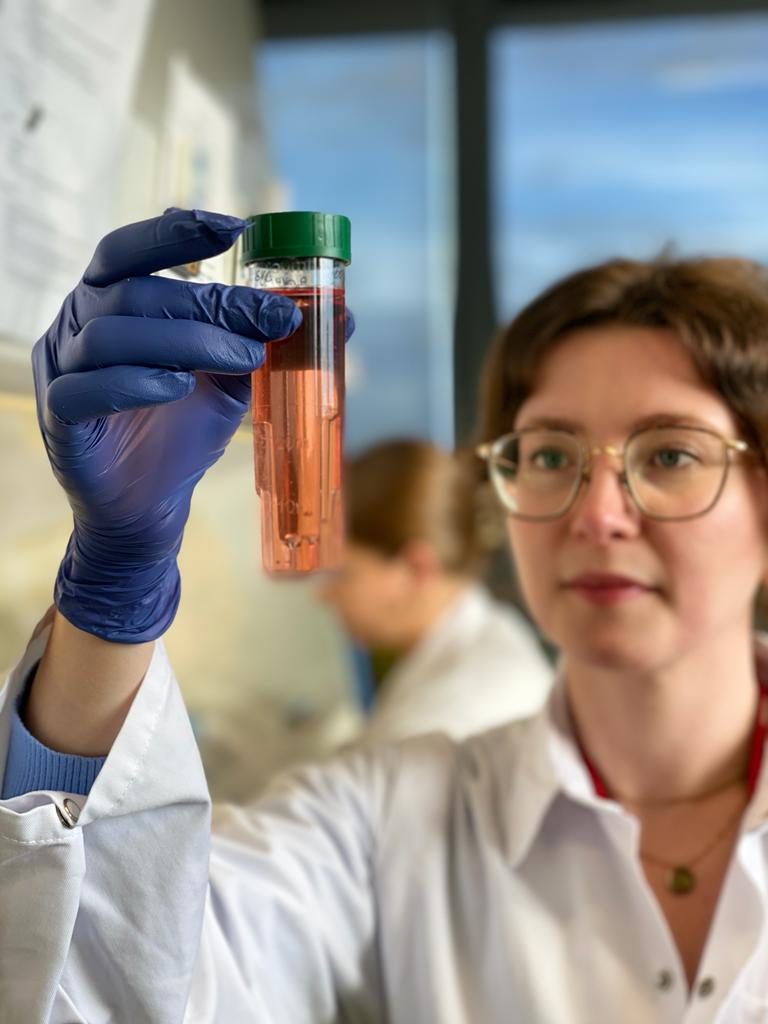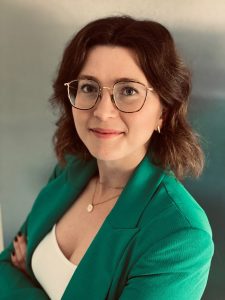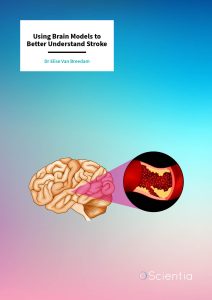Dr Elise Van Breedam | Using Brain Models to Better Understand Stroke
Stroke is a leading cause of disability and death. Despite extensive research and the huge burden on patients and healthcare systems, treatments are sadly limited and new treatments are slow to emerge. To better understand why so many promising drugs that have worked in animal and laboratory studies failed to show the same benefits in human clinical trials, Dr Elise Van Breedam from the University of Antwerp reviewed current research methods. Her review points to the potential for human-based 3D models to bridge the gap between animal studies and human patients.
Prevalence and Consequences
Strokes are a leading cause of disability and death around the world. In Europe alone, there are over a million incidents of stroke each year, and this is likely to increase in the future as our population ages. Strokes occur when the blood supply to part of the brain is cut off, causing a wide range of symptoms depending on which part of the brain is affected.
Common symptoms following stroke include difficulty in speaking, weakness or loss of coordination, and severe headaches. People who survive are often left with long-term problems due to the damage to their brains.
The majority of strokes are ischaemic, meaning they are caused by a blood clot in a blood vessel, reducing (or even blocking) the blood flow to part of the brain. Within minutes of reduced blood flow, the brain cells in this area begin to die due to the lack of oxygen and nutrients. The initially damaged area of the brain is known as the ischaemic core. Damage to cells here is severe and likely to be irreversible. The cells in the ischaemic penumbra surrounding the core are usually less severely damaged and, with quick treatment, may recover.
Despite extensive research to date, stroke treatment is currently limited to drugs which break down blood clots or the surgical removal of the blockage. These treatments need to be administered as soon as possible after the stroke. However, due to the rapid nature of stroke damage and the limited time frame in which these therapies are actually effective, only a very small proportion of ischaemic stroke patients can be treated in this way. This leaves thousands of stroke patients without viable treatment options.
Dr Elise Van Breedam from the University of Antwerp in Belgium worked with colleagues to conduct a review of current techniques and technologies in stroke research. She is also working to produce a novel life-like model system of the human brain to assess the efficacy of new stroke treatments.
Brain Models: Application to Stroke
Most of our knowledge of how strokes result in brain damage comes from using animal models, both animal cells in the laboratory (in vitro) and by working with live animals under careful conditions (in vivo). Animal stroke models are able to highlight different aspects of the complex pathways involved in stroke damage that we aren’t able to see in simpler cell-based models. However, for investigating specific basic mechanisms and the role of specific cell types herein, in vitro methods are more controllable and so are preferred. Using cells of either animal or human origin also allows the high-throughput screening of potential medicines.
To study stroke and potential treatments in the laboratory, cells are often deprived of glucose and placed into a chamber without or with very low levels of oxygen to mimic the conditions of the brain during a stroke.

Why Don’t We Have Effective Treatments for Stroke?
In the last few decades, thousands of drugs have been evaluated in the search for an effective stroke therapy. None have been licensed due to a lack of evidence supporting their efficacy when tested in actual human patients. This could be due to several reasons, including problems with the initial animal studies or flaws in the methodologies later used in clinical trials, but equally because current laboratory models are insufficient to accurately model human ischaemic stroke responses.
Most stroke research is conducted in rodent (cell) models in the laboratory. This is mainly due to the difficulty of obtaining human brain tissue, either post-mortem or via the neurosurgery of young epileptic patients. While humans and rodents share some of the physiological aspects of stroke, they have been separated by 80 million years of evolution, leading to physical, cellular, and molecular differences. The upshot of these differences is that although we rely on animal models for practical reasons, problems may emerge when testing potential treatments in humans because the models used in the laboratory were simply not similar enough to reliably inform this later stage of drug development.
While a few studies have been completed in human cells, these have been based on cancerous cells and may differ significantly from brain cells affected by strokes. In vitro studies traditionally use a single type of cell, allowing researchers to ascertain how a specific cell type reacts. However, this approach doesn’t show the bigger picture, as our brains are made up of multiple cell types in complex arrangements. During a stroke, the interactions between different types of cells are important and can influence the amount of damage and recovery seen in different areas. Additionally, these cell studies have historically been performed with the cells grown on the bottom of plastic culture dishes or plates.
Bridging the Gap with New Technologies
Dr Van Breedam’s work has highlighted the potential value and use of innovative new technologies such as stem cell research, microfluidics, and organoids.
In stem cell science, key advances are revolutionising stroke research, particularly the generation of induced pluripotent stem cells (iPSCs) – where adult human cells such as those from skin or blood are reprogrammed to become stem cells which can then differentiate into different types of brain cells. iPSC technology has led to the generation of three-dimensional brain models such as brain spheroids or organoids – groups of cells which self-assemble and mimic structural and functional properties of the human brain. These cells can be combined with microfluidic approaches to form ‘brain on a chip’ models, which allow relevant cell types to be exposed to life-like conditions, and are particularly useful to study how stroke damage spreads through the brain.
The lack of new therapeutics for stroke underlines that existing methods are limited. Novel models must be developed to effectively bridge the gap between animal studies and human patients. Dr Van Breedam’s review highlights how human-based 3D models consisting of multiple cell types could better predict therapeutic efficacy in human patients when used alongside existing traditional in vivo and in vitro models.
SHARE
DOWNLOAD E-BOOK
REFERENCE
https://doi.org/10.33548/SCIENTIA966
MEET THE RESEARCHER

Dr Elise Van Breedam
Laboratory of Experimental Hematology, VAXINFECTIO
University of Antwerp
Antwerp
Belgium
Dr Elise Van Breedam received her PhD from the University of Antwerp in 2022. Her doctoral work focused on developing a human iPSC-derived neurospheroid model for ischaemic stroke research. Following this, Dr Van Breedam started postdoctoral training involving collaborations with research groups based at the University of Minho (Portugal) and Tel Aviv University (Israel) to develop an in vitro 3D brain model for the study of Parkinson’s disease. Before her PhD, Dr Van Breedam was selected to participate in the Honours College program, which she completed concurrently with her Biomedical Sciences studies at the University of Antwerp. She was awarded a prize for her Master’s thesis research at the European Students’ Conference in Berlin in 2017. Alongside her research commitments, Dr Van Breedam has supervised and supported several Master’s students with their research projects, and has organised multiple Stem cell Workshops for the public at Day of Science events.
CONTACT
E: Elise.vanbreedam@uantwerpen.be
W: https://www.uantwerpen.be/en/staff/elise-van-breedam_17938/research/
KEY COLLABORATORS
Professor Peter Ponsaerts, University of Antwerp
FUNDING
This work was funded by the University of Antwerp (IOF FFI170347 and GOA FFB200404) and Fund for Scientific Research Flanders (FWO-Vlaanderen) (G091518N), granted to Professor Peter Ponsaerts.
FURTHER READING
E Van Breedam, P Ponsaerts, Promising Strategies for the Development of Advanced In Vitro Models with High Predictive Power in Ischaemic Stroke Research, International Journal of Molecular Science, 2022, 23(13), 7140. DOI: https://doi.org/10.3390/ijms23137140
E Van Breedam, A Nijak, T Buyle-Huybrecht, et al., Luminescent Human iPSC-Derived Neurospheroids Enable Modeling of Neurotoxicity After Oxygen-glucose Deprivation, Neurotherapeutics, 2022, 550–569. DOI: https://doi.org/10.1007/s13311-022-01212-z

REPUBLISH OUR ARTICLES
We encourage all formats of sharing and republishing of our articles. Whether you want to host on your website, publication or blog, we welcome this. Find out more
Creative Commons Licence (CC BY 4.0)
This work is licensed under a Creative Commons Attribution 4.0 International License. 
What does this mean?
Share: You can copy and redistribute the material in any medium or format
Adapt: You can change, and build upon the material for any purpose, even commercially.
Credit: You must give appropriate credit, provide a link to the license, and indicate if changes were made.
SUBSCRIBE NOW
Follow Us
MORE ARTICLES YOU MAY LIKE
Dr Ralf Adam | New Technologies Shaping the Future of Oral Hygiene
Understanding the efficiency of various toothbrush technologies is essential for achieving optimal oral health. Dr Ralf Adam, who leads a dedicated team at Procter & Gamble in Germany, is keen to investigate the complexities of these technologies. His team have provided new insights into the best toothbrush types for plaque removal and the maintenance of gum health. By highlighting the importance of informed oral care decisions and ongoing investigations, this vital research works towards ensuring everyone can achieve a brighter, healthier smile.
Dr Toby Phesse | Revealing the Mysteries of Wnt Signalling: Novel Approaches to Beating Cancer
Cancer remains a leading cause of mortality worldwide, and the need for new, more effective treatments remains an urgent challenge. Dr Toby Phesse from Cardiff University in the UK focuses on the role of the Wnt receptor found on the surface of cells and its involvement with cell communication and cancer growth, bringing fresh hopes for new therapeutic options.
Dr Vijay Reddy | The Virus World Database: An Invaluable Resource for Public Health and Healthcare
Severe viral disease presents an ongoing challenge to the health of humankind. While unparalleled developments in science and technology are improving our understanding of such viruses, this information needs to be readily accessible to researchers to ensure continued progress in public health and healthcare. Dr Vijay Reddy and his colleagues at the Hormel Institute (University of Minnesota) developed the Virus World database, an invaluable resource that details the genome, structure, and host of practically every discovered virus to date.
Professor Ralf Herwig | Deciphering the Enigma of Vitamin D and the Immune System
Vitamin D has been studied as a treatment for a large number of diseases and conditions, from cancer to autism to COVID-19. However, its mode of action is not completely understood. Professor Ralf Herwig carries out his research at HG Pharma GmbH (Austria) and Ulster University (UK). His vital work explores the role of vitamin D in the body with a view to unlocking its potential as a treatment for a variety of health conditions involving the immune system.





